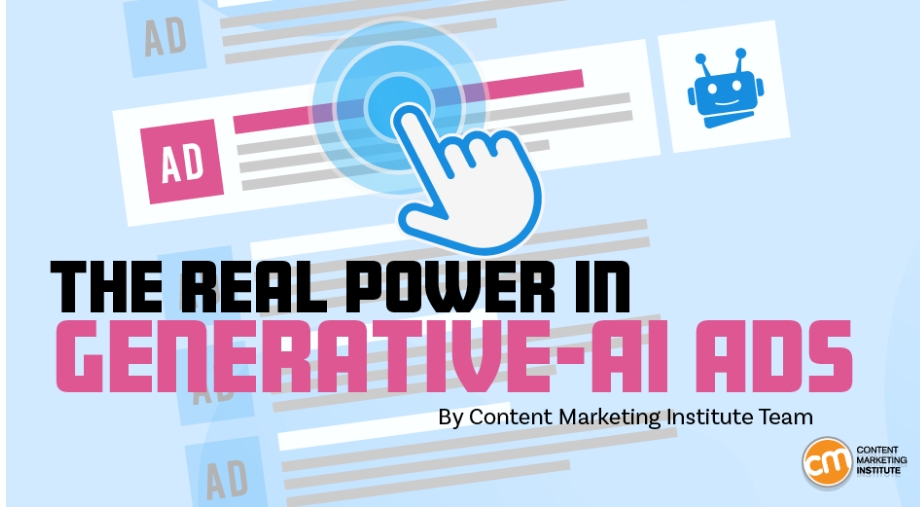You’ve likely used AI for digital advertising, given how it powers Google’s assembly of search ads.
But are you using generative AI to develop content for advertising?
Reuters recently reported about some of the biggest advertisers using generative AI to cut costs and increase productivity. But what’s really going on?
CMI’s chief strategy advisor Robert Rose discusses how generative AI contributes – and what it doesn’t – to digital advertising. Watch it below, or keep reading for the highlights:
Automated forms of AI or algorithmic creation of advertising have been around for a long time. Almost 10 years ago, one of Robert’s marketing heroes, Julie Fleischer, used content marketing at Kraft Foods to track over 22,000 attributes of more than 100 million annual visitors to their websites. They used that data to automatically create millions of dynamically assembled advertisements to targeted people.
In 2023, the conversation centers on generative AI and how big brands use it to cut costs and time from their advertising programs. But is it all just a gimmick? Or, to paraphrase the Reuters headline, is it from “Mad Men and Women to Machines?”
Despite the wariness of security and copyright risks, many of the world’s biggest advertisers use generative AI to create content that delivers more successful advertising campaigns.
Robert says while the use cases detailed in the article are a bit outdated, they highlight the real value of AI and what it is not in this approach to advertising creative.
The first campaign came from Mondelez International for its Cadbury brand in India. It used AI-generated voice and face technology featuring Bollywood superstar Shah Ruh Khan. Small businesses selling Cadbury used a microsite to generate a version of the ad where the star mentioned their store by name. Some 2,000 stores created 130,000 ads for digital channels.
“It’s similar to what Julie did at Kraft 10 years ago. You iterate thousands of versions of the ad at scale and on demand. That saves a ton of money on producing the creative in the ads,” Robert says, noting Coca-Cola did this not that long ago.
Side note: The Cadbury campaign raises a worrying concern. Robert says, “Letting a huge movie star provide a testimonial for any local business that fills in the blank? What could possibly go wrong with that?”
Reuters included a second example of AI-generated advertising – the newsjacking campaign for Nestle’s Laitiere (Milkmaid) yogurt and dairy brand. It created a riff on Amsterdam’s Rijksmuseum use of X-rays to show objects hidden behind Vermeer’s painting The Milkmaid.
Nestle’s agency WPP used OpenAI’s DALL-E2 to generate “imagined” scenes outside the borders of Vermeer’s painting. It developed almost 1,000 iterations and succeeded in creating around 700,000 Euros of media value. But the real story was how much they saved in cost and time by not having humans create all those images.
HubSpot recently used AI to design ads for its The Hustle newsletter. The campaign reduced the cost of subscriber acquisition by 300% because it saved the cost of designing the ad imagery.
“These campaigns are interesting experiments. To paraphrase one of my favorite shows, Friday Night Lights, we should have clear eyes and full hearts about what is being done and where the real value is being generated,” Robert says.
CMI’s latest career-focused research (registration required) shows content practitioners are very worried about how generative AI will devalue their skills. The two most frequently cited worries were “less respect for skilled writers” and “writing/editing being viewed as a commodity.”
But the generative-AI creative campaigns for Cadbury, Nestle, and HubSpot didn’t really do that. “All of them needed a human to create the content idea. They needed another human to edit it into shape. And they needed another human to focus on the creative production of what it would look like,” Robert says. “Technology was only used to scale the expression of that content…Read More

